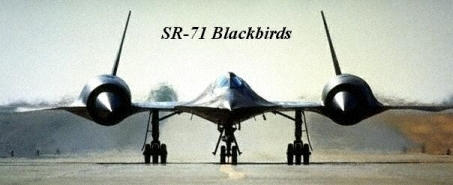
 YF-12A
Interceptor
YF-12A
Interceptor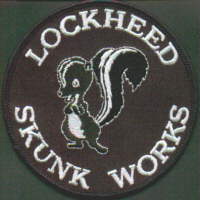
The SR-71 was the last in a series of aircraft that the famous Lockheed Skunk Works manufactured called the Blackbird Series (excluding the current stealth aircraft). There was the original A11, A12, YF-12A, M21, and the SR-71A,B and C. There was also a proposal to build a Blackbird Bomber (designated B12). Out of all of these aircraft the one that stands out is the Interceptor version of the Blackbirds called the YF12A.
Lockheed Skunk Works manufactured three YF12A Interceptor aircraft. The design is basically the same as the SR-71. However, modifications were made to the photo bays to accept the AIM-47 missiles; a cockpit was added to accommodate the Fire Control Officer; two ventral fins were added under each nacelle and a folding stabilizer fin was added under the centerline of the aircraft. The YF12A carried three GAR9/AIM-47 missiles which could carry a 250 kT nuclear warhead. The YF-12A nose is rounded to accommodate the Hughes ASG-18 Radar and Fire Control System. The ASG-18 was a combination of long range radar and infrared search sensors along with a precision radar coupled to the infrared tracking system. Range of the trackers was estimated at 200 to 300 miles giving the YF-12A unprecedented ability to track and destroy enemy aircraft.
During testing of the YF-12A, seven known missile firings occurred. These were conducted with the YF12A flying at Mach 2.0 or faster and the target drone aircraft flying at 40,000 feet or lower altitude.
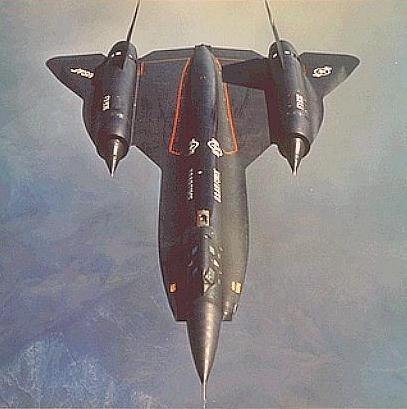
YF12A Interceptor photo taken from a refueling tanker.
The air refueling door is open to accept JP-7 fuel.
![]()
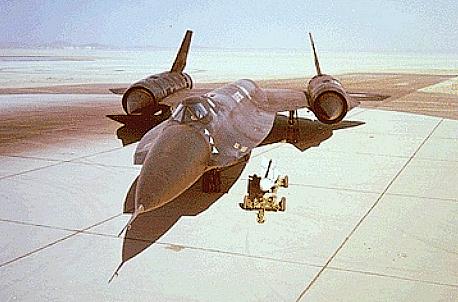
This photo of #936 was taken on taxiway D at Edwards AFB, on Pad
18, just northeast of the
Weight & Balance Hangar. The lake bed is Rogers and the buildings
in the distance are at the Borax mine near Boron. There are three White
Blackbird silhouettes stenciled on the nose under the cockpit; these reflect 3 World Record
Flights on 1 May 1965. The AIM-47 missile
is on the dolly in the foreground.
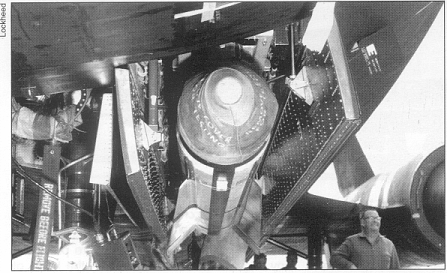
AIM-47 Missile in the Launch Bay
(Lockheed Photo)
![]()
The Mach 3 Interceptors:
YF12A #60-6934 LAC#1001
This Prototype was the 1st YF-12A and performed it's maiden flight on 7 August 1963. On 28 September 1965 flying at Mach 3.2 and 75,000 feet, #934 fired an AIM-47 missile at a target Q-2C Drone destroying the Drone at 20,000 feet. YF12A #934 aircraft was seriously damaged during a landing at Edwards AFB. It was placed in storage in Palmdale, California. The rear half of #934 was later used to build the SR-71C #61-7981 trainer which flew for the first time on March 14, 1969.
World Altitude
Record Set by #934
WORLD ABSOLUTE AND CLASS RECORDS FOR SUSTAINED ALTITUDE:
Group III Sustained Altitude (Absolute). . . . . . . 80,258 ft. (24,462.59 m)
Crew: Col. Robert L. Stephens, Lt. Col. Daniel Andre
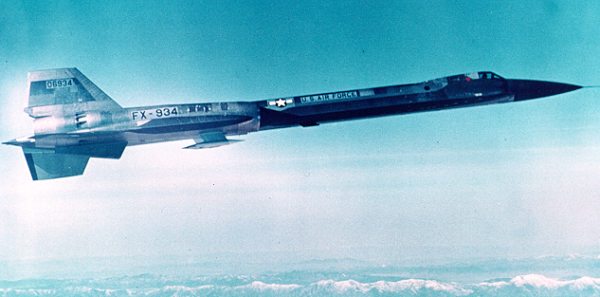
"934"
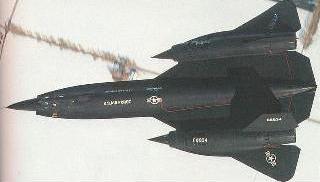
The YF12A #934 Activity and DOD Cancellation of Program
YF12A #934 was one of Bob Eaton's Aircraft while working for the Lockheed Skunk Works in the early 1960's. He has graciously provided some insight into the activity of this Interceptor. The following data is provided to acquaint the reader with an in-sider's view of this unique Blackbird:
Back in the days when there was an Air Defense Command, General A.C. (Sailor) Agan was lobbying for a replacement for the F106. The YF was so successful that we were given a follow-on contract to up-grade one of the A/C (#934) to be a YF12A/B, prototype for a production fighter called the F12. The production contract was to be for 200 airplanes! #934 was, with engines and outer wings removed placed back on the delivery trailer and transported back to Burbank, California. There it was to be given a flat nose (like ASAR) because Hughes had developed a new antenna that could operate in an enclosure close to the original design contours of the "A" & "SR-71" noses. It was actually to be an SR-71 converted to a Fighter/Interceptor in its final configuration. There was going to be a big buy of these new Interceptor type fighters, the F12. As part of the work the airplane was placed back in the jigs and was unmated at station 715. Lo and behold the Department of Defense (DOD) Whiz kids prevailed. These people canceled the YF program in its entirety. Gen. Agan resigned under protest of McNamara's treatment of the program. It was replaced by the F106, what they already had in service. This was cheaper and allowed them to waste more money on Viet Nam. YF12A, #934 pieces remained at Burbank for a time until the AF realized that having lost one of their "B" models, they needed another trainer. At Burbank there was a complete metal mockup fore-body of an SR-71. It was complete except that on assembly it was never meant to fly, so all the fuselage panels were assembled dry, no sealant. Thus was born #981, the vehicle that nobody liked because it was different. #934's fore-body hung around Burbank until Lockheed finally interested NASA Dryden into having it shipped up to Edwards AFB for testing purposes. They did ultimately use it for fit check and tryout of the quartz heaters in a test that was completed using #935. It was damn expensive buying and powering all the heaters required to completely wrap the airplane in this heater shroud. It had to be done late at night when the power requirements on the base were the least. I don't remember the electrical load but it was huge. The purpose of this test was to heat the vehicle to a hot-leg environment, so as to calibrate and confirm all their thermocouple data from their test flights. The aircraft had to be fueled for this. We used denatured alcohol instead of JP-7. The fore-body from #934 kicked around in the junk pile for a while and at the closing of NASA YF12A Program in was carted off, by Lockheed ADP people.......to that great place of mystery and was buried.
Note of interest: The GAR9/AIM47 was ultimately given to the NAVY F14. Its capability was reduced to allow for more reliability. By that I mean the range was reduced to, I think about 100 miles.
Written by Bob Eaton, Lockheed Skunk Works Advanced Development Program
Editors Note: Bob Eaton has worked throughout the Blackbird Program for 36 years (1963-1999). His resume included Lockheed Engineering Flight Test Supervisor-Electrical/Instrumentation; Lockheed Technical Representative (Skunk Works); Dryden NASA Flight Test Center Consulting Engineer for the A12, YF12Aand the SR-71. Thanks Bob for your lifetime contribution to the success of the Blackbird Program in all of it's many aspects.
![]()
YF12A #60-6935 LAC #1002
This YF12A is the sole surviving aircraft of the Interceptor series. On 18 March 1965 flying at mach 2.2 and altitude of 65,000 feet, #935 launched an AIM-47 missile successfully intercepting and destroying a Q-2C Drone flying at 40,000 feet. Again on 19 may 1965 flying at Mach 2.3 and altitude of 65,000 feet, #935 launched an AIM-47 missile successfully intercepting and destroying a Q-2C Drone flying at 20,000 feet. She was in storage from 1967 to December of 1969. On December 11, 1969, #935 was loaned to NASA as a test aircraft flying 145 flights for NASA. On November 07, 1979, #935 was flown to the U.S. Air Force Museum at Wright-Patterson AFB, Ohio for permanent display. Flight crew to Wright Pat was Col. Jim Sullivan and Col. R. Uppstrom.

Preparing for Launch
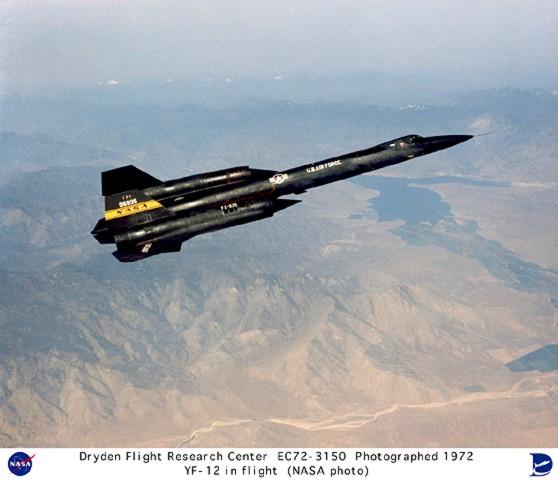
Courtesy of NASA Dryden Flight Research Center
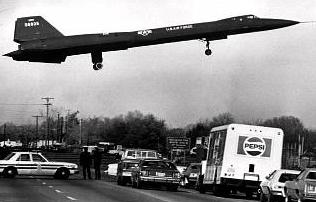
YF12A #60-6935 Landing at Wright Patterson AFB for Delivery to the USAF Museum
(Courtesy of Bob Eaton, Lockheed Skunk Works)
![]()
YF12A #60-6936 LAC #1003
On 22 March 1966 #936 flying at Mach 3.15 and altitude of 74,500 feet launched an AIM-47 missile successfully intercepting and destroying a Q-2C Drone flying at 1,500 feet. On 13 May 1966 flying at Mach 3.17 and an altitude of 74,000 feet #936 successfully intercepted and destroyed a Q-2C Drone flying at 20,000 feet. The third and final missile intercept occurred on 21 September, 1966 with #936 flying at Mach 3.2 and an altitude of 75,000 feet successfully intercepted and destroyed a QB-47 (SN#34256; the target for the inert warhead test firing) conducted out of Edwards AFB and flying at 500 feet in the Mugu Range. This intercept removed three feet off the left horizontal stabilizer of the QB-47. Pilot-Colonel Vern Henderson and WSO was Sam Ursini for this flight. YF-12A #936 set the world Speed records on 1 May 1965. The USAF team of pilots was led by Colonel Robert L. "Silver Fox" Stephens, the first military pilot to fly the YF-12A.
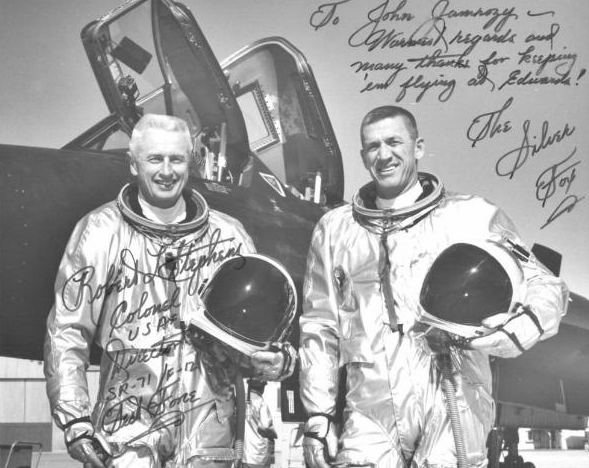
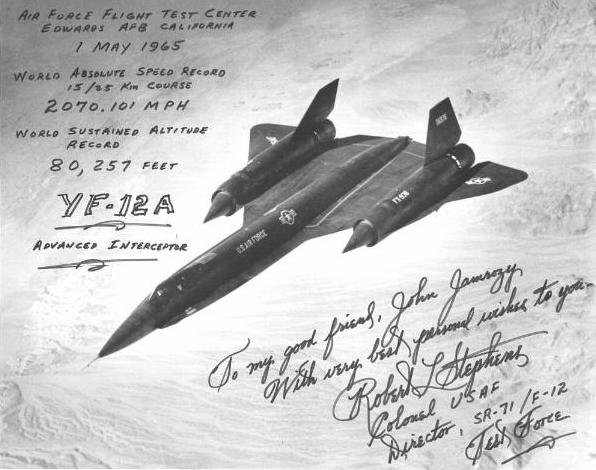
WORLD ABSOLUTE AND CLASS RECORDS FOR SPEED:
15/25 km straight course . . . . 2,070.102 mph (3,352 kph)
Crew: Col. Robert L. Stephens, Lt. Col. Daniel Andre
May 1, 1965.....WORLD ABSOLUTE AND CLASS RECORDS FOR SPEED:
500 km closed circuit . . . . . . 1,643.042 mph (2,644 kph)
Crew: Maj. Walter F. Daniel, Maj. Noel T. Warner
May 1, 1965......WORLD ABSOLUTE AND CLASS RECORDS FOR SPEED:
1,000 km Closed Circuit . . . . . 1,688.891 mph (2,718 kph)
Crew: Maj. Walter F. Daniel, Capt. James P. Cooney
YF-12A #936 was briefly retired but reactivated for NASA test programs. This aircraft was lost on 24 June 1971 on the 63rd flight test in an accident at Edwards AFB. Pilot Lt Col Ronald J. Layton and Systems Operator, Billy A. Curtis were approaching the traffic pattern when a fire broke out due to a fuel line fracture caused by metal fatigue. The flames quickly enveloped the entire aircraft and on the base leg both crewmembers ejected. #936 was totally destroyed. Both crewmembers survived.
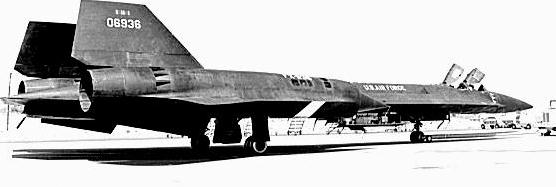
"936"
![]()
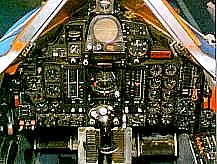
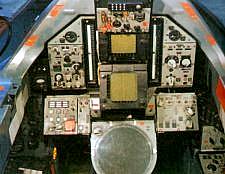
YF12A Pilot and Fire Control Officer's Cockpits
![]()
YF-12A Development
Courtesy of Dennis Edelbrock, Lockheed ADP
During flight testing several A-12s were lost, but the testing continued on both the YF-12 and the A-12 aircraft. Mach 3.0 was routinely broken and many speed records held by Soviet aircraft fell. However, these records could not be made public due to the secrecy of the program. The Department of Defense decided to take back the records from the Soviets. On May 1, 1965 two YF-12A aircraft set the absolute altitude record of 80,258 feet, and a speed of 2,070 miles per hour on a closed course. During continued flight testing an A-12 exceeded mach 3.28 at 90,000 feet altitude. On December 21, 1966 an A-12 piloted by Lockheed test pilot Bill Park covered 10,198 statute miles in six hours.
Colonel Vern Henderson worked
with Kelly Johnson and Russ
Daniel in developing the YF-12A pilot’s cockpit, as a consultant. This job
kept expanding and he ended up Director of the Air Defense Flight Test Office (ADFTO)
and an active test pilot at Edwards when the veil of secrecy was lifted.
He left
the program in 1967 to command the fighter wing at Misawa, Japan.
Editors Note: I asked Colonel Vern Henderson to critique this web page for necessary corrections. His reply follows:
1.
I have never seen a photo of the YF-12A with anything other than the round radome.
(Data Corrected). The ASG-18 was not only powerful, but of greater
importance was a pulse doppler system and therefore did not suffer a ground
clutter problem thereby permitting “look down, shoot down”.
While a nuke warhead was a possibility, an expanding rod warhead was to
be used. Remember that we operate over friendly territory!
2. You state that seven known missile firings occurred. I only know of two. The first by Jim Eastham/John Archer, Lockheed/Hughes test crew. The second, and first military crew firing , by Henderson/Ursini.
3.
Jim Eastham was employed by Hughes Aircraft and
then moved to Lockheed. While with Hughes, he flew the bailed B-58 and I am
sure that earlier radar and missile tests were conducted from that platform.
They may have used a trapeze launcher from the B-58 as it would be on
centerline.
4.
Re: The 25 April 1966 missile launch from #934. I do not recall this event and
I wonder if we have the dates confused and are talking about the September
launch from #936? In this event, there was a direct hit on the QB. The QB was
recovered with part of the left horizontal (stabilizer) missing. I have
two USAF photos. (Editor's note: Data for the 25 April missile launch from
#934 has been removed from this page).
5.
Three flights in one day was do-able. Recall that this was to be an
interceptor and “quick” turnaround times would be a tactical necessity.
The bad guy wouldn’t wait and come back next week. I had about 135 of the
finest aircraft maintenance personnel that Air Defense Command could provide.
All were hand selected and superbly skilled. The skills and
organization required for fast turnarounds were “old hat” for this group.
(Editors Note: I had questioned the 3 turnaround flights of #936, setting
the three World Speed Records in one day).
6.
I think but do not guarantee the speed altitude records are correct as stated.
I guess Jim Cooney is the only survivor of this
group (scary). We remain close friends and in contact.
7. Yes, Jack Layton bailed out of #936.
Editor's
Note: Thank you Colonel Henderson for your valuable input.
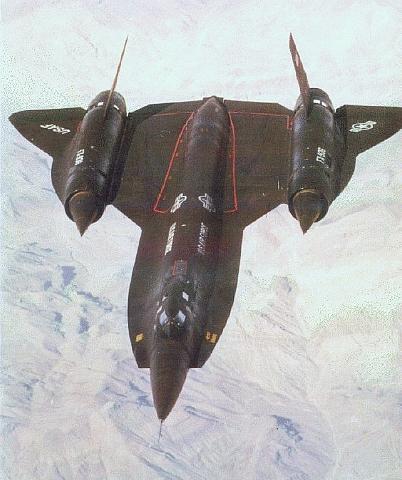
YF12A
![]()
| SR-71 Front Page | Links Page | Index Page | Recollections | 2001 Reunion |
| "SR-71 Blackbirds" Web Site Navigator | ||||
| First Created: April 15, 1996 - Last Revised: March 29, 2004 | ||||
| Copyright © 1996 Leland R. Haynes Email: sr71webmaster@sr71.us | ||||
Credits
Lockheed ADP Skunk Works and Lockheed Martin Corporation; NASA; Dennis Edlebrock. Photo "yf12a935.jpg" courtesy of Bob Eaton. "Skunk" is a registered trademark of Lockheed Martin Corporation.
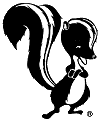
Page #23 of the "SR-71 Blackbirds"